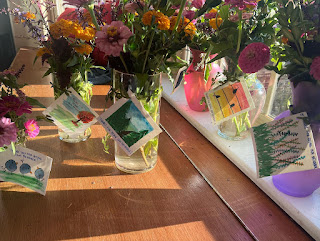Motivations for Being a Good Neighbor: For the Community Benefit (3 in a series of 4)
Where neighbors share a sense of community, residents are more likely to feel safe and secure and have a lower fear of crime than those without a sense of community. People living in connected neighborhoods feel healthier and are happier about their lives and are more likely to vote and help others by volunteering. For these reasons and many more, being a good neighbor and connecting with others on your block improves the neighborhood and helps you personally.
Neighborliness is not a special talent - it is a decision! Anyone can be a good neighbor —it just takes a little initiative, but the rewards make it worthwhile. Neighborhoods with a higher sense of community enjoy a higher quality of life.
So please do it for yourself and your family.
Motivation for action can vary widely among humans. But there seem to be four major motivators for individuals to begin reaching and loving their neighbors.
Community Benefit
What has the single biggest safety impact on your community? More police, armed security systems and streetlights? No. The most important things you can do to make your neighborhood safer are to get to know your neighbors names and get out of the house.
· The more neighbors you know and interact with the less opportunity for crime there seems to be. One study showed a 60% decrease in crime for a community that placed an emphasis on neighboring.
· According to MU Extension specialists, developing neighbors and neighborhoods can help develop leaders, aids in community decisions making, emergency preparedness and inclusive communities.
· NeighborLink Fort Wayne completed a three-year neighborhood study and discovered five indicators of neighborhood health: neighborhood pride, social connectivity, safety, cleanliness and beautification, advocacy and collaboration with city government and organizations. Being an active neighbor can directly impact at least four of these five indicators.
· According to author Marc Dunkelman, our social immune system is not as robust as it was. He notes how America was always organized from the bottom up, from township (or neighborhood) to county to state to federation. But the moderating effects that mixing with neighbors of differing opinions once inspired, much like the health benefits born of daily contact with others, are crumbling, leading to inexorably more polarized politics.
· Robert Putman, author of “Bowling Alone,” says: “When the choice is between 10% more police or 10% more connections among neighbors, pick the neighbor connections every time.
MORE INFORMATION
Does this article make you interested in taking the Engaged Neighbor pledge? Five categories and 20 principles to guide you toward becoming an engaged neighbor. Sign the pledge online at http://engagedneighbor.com.
Contact the blog author, David L. Burton at dburton541@yahoo.com.





Comments
Post a Comment